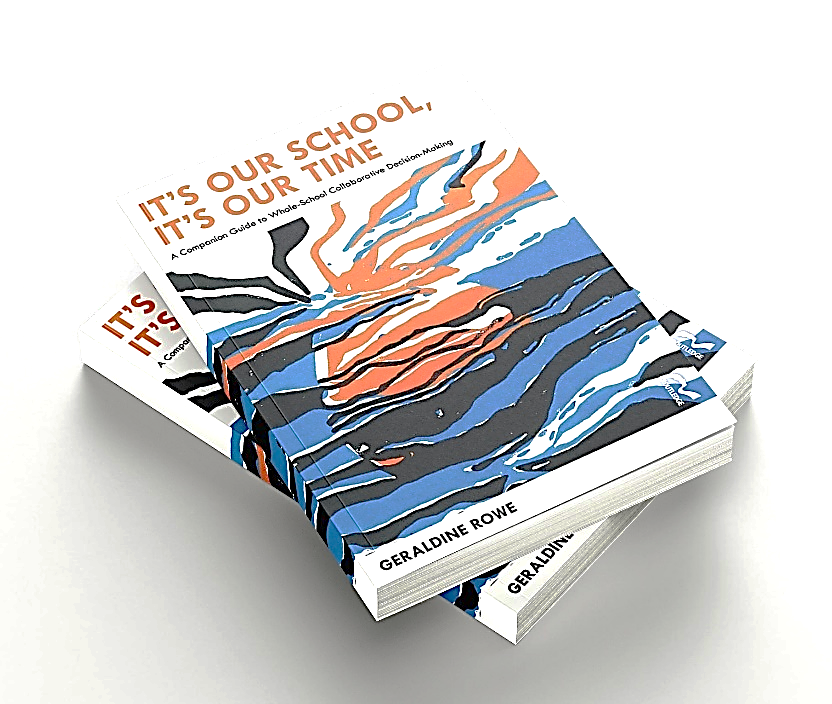It’s Our School, It’s Our Time: a companion guide to whole-school collaborative decision-making
A few years ago I carried out a research study as part of my doctorate; I explored the experience of three teachers who were sometimes sharing classroom decision-making with their pupils. Although there is evidence that this way of teaching has many benefits for children, it is not commonly used. I wanted to know why those who were already using it were doing so, what they were doing, and how their practice evolved. I felt that if I could find out more about what this kind of teaching was like from the teachers’ point of view, I might be able to shed some light on why shared decision-making was not used more widely. It became clear that these teachers lacked examples of this way of teaching, or any theoretical framework to back up their practice. What also emerged from my study was the importance of collaborative decision-making (CDM) being a whole-school approach. This book provides examples, a theoretical framework and evidence both for the impact of CDM and for it being taken on by the educational system in and beyond schools.
I used the classroom experiences shared with me by my participants and those from other teachers I had researched to select 25 stories (taken from nursery, primary, secondary and special school settings) illustrating various elements of CDM. I am a practical person and this book describes not only the positive outcomes of CDM, but also some of the hurdles and how teachers overcame them.
In It’s Our School, It’s Our Time, you will find many ideas for for co-design of the curriculum and the environment; joint decision-making around resource and time management; and negotiation of classroom discipline and organisation.
In addition to my own experience in education and my research, I have drawn on many sources to make this book a treasure trove for collaborative decision-makers. I comment throughout the book on the psychology of CDM. Yes, research shows that involving pupils in decisions about what goes on in their own classrooms improves engagement and productivity, but why and how does this happen? You’ll have to read it to find out!
I truly believe that greater collaboration between teachers and pupils in classroom decision-making could well become the most significant change in schools this decade, and I sincerely hope that this book will help people to make this happen.
Read the book, try it out and report back to me or attend my CDM Forum (subscribe below to receive details).
P.S. If you’ve already read it, please consider leaving a review below and on the website where you bought it from.
